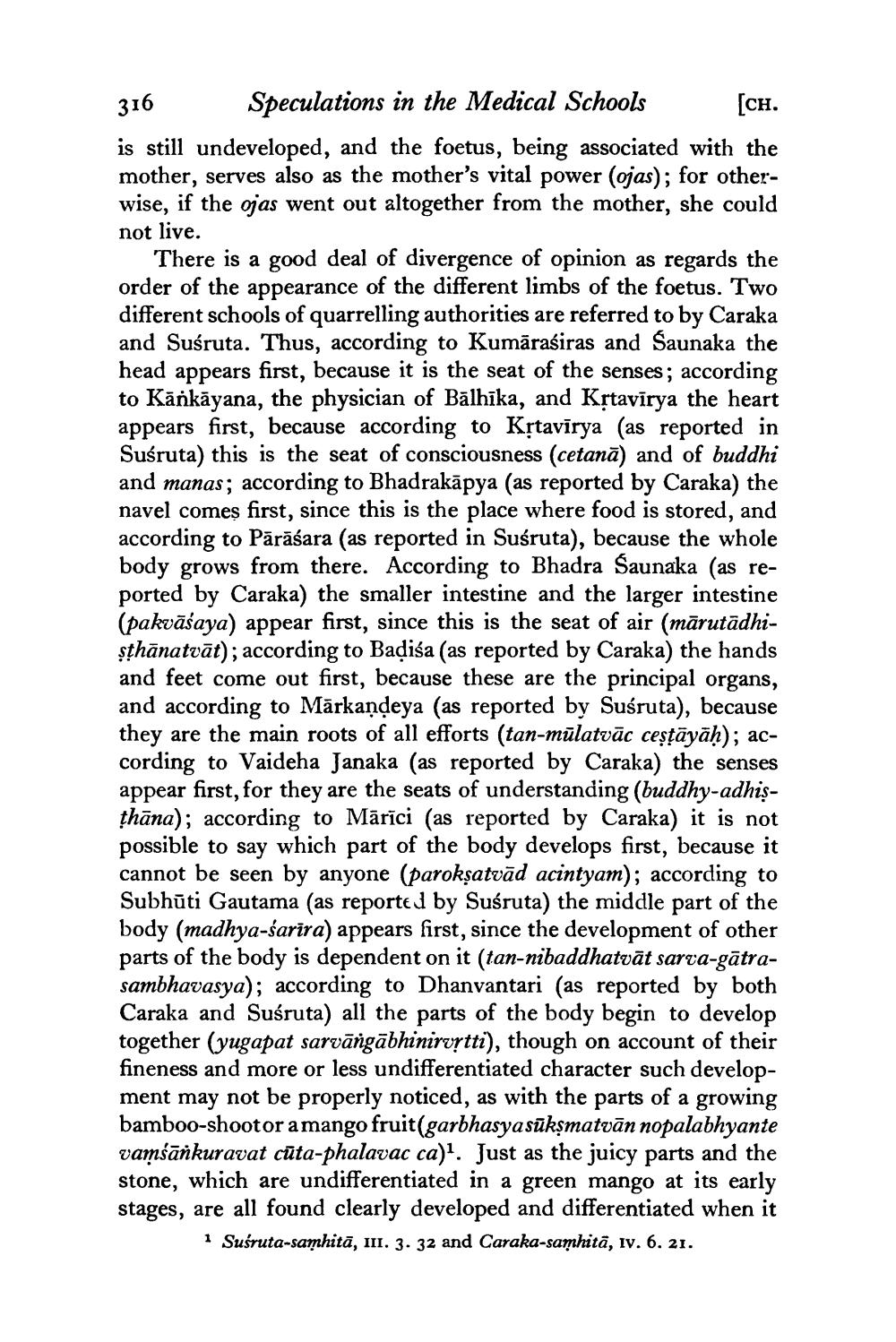________________
316 Speculations in the Medical Schools [CH. is still undeveloped, and the foetus, being associated with the mother, serves also as the mother's vital power (ojas); for otherwise, if the ojas went out altogether from the mother, she could not live.
There is a good deal of divergence of opinion as regards the order of the appearance of the different limbs of the foetus. Two different schools of quarrelling authorities are referred to by Caraka and Susruta. Thus, according to Kumārasiras and Saunaka the head appears first, because it is the seat of the senses; according to Kārkāyana, the physician of Bālhīka, and Kệtavīrya the heart appears first, because according to Kịtavīrya (as reported in Suśruta) this is the seat of consciousness (cetanā) and of buddhi and manas; according to Bhadrakāpya (as reported by Caraka) the navel comes first, since this is the place where food is stored, and according to Pārāśara (as reported in Suśruta), because the whole body grows from there. According to Bhadra Saunaka (as reported by Caraka) the smaller intestine and the larger intestine (pakvāśaya) appear first, since this is the seat of air (mārutādhișțhānatvāt); according to Badisa (as reported by Caraka) the hands and feet come out first, because these are the principal organs, and according to Mārkandeya (as reported by Susruta), because they are the main roots of all efforts (tan-mūlatvāc cestāyāḥ); according to Vaideha Janaka (as reported by Caraka) the senses appear first, for they are the seats of understanding (buddhy-adhisthāna); according to Mārīci (as reported by Caraka) it is not possible to say which part of the body develops first, because it cannot be seen by anyone (parokşatvād acintyam); according to Subhūti Gautama (as reported by Suśruta) the middle part of the body (madhya-śarīra) appears first, since the development of other parts of the body is dependent on it (tan-nibaddhatvāt sarva-gātrasambhavasya); according to Dhanvantari (as reported by both Caraka and Suśruta) all the parts of the body begin to develop together (yugapat sarvāṇgābhinirvrtti), though on account of their fineness and more or less undifferentiated character such development may not be properly noticed, as with the parts of a growing bamboo-shootor a mango fruit(garbhasya sūksmatvān nopalabhyante vamśāňkuravat cūta-phalavac ca). Just as the juicy parts and the stone, which are undifferentiated in a green mango at its early stages, are all found clearly developed and differentiated when it
1 Suśruta-samhitā, 11. 3. 32 and Caraka-samhitā, iv. 6. 21.




